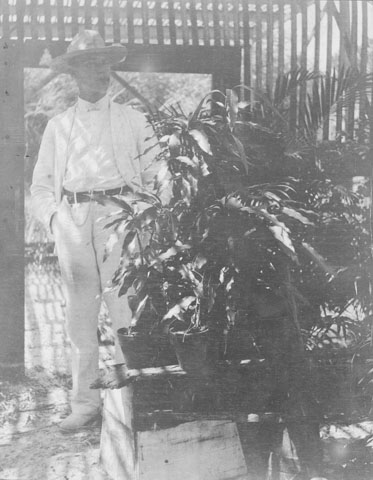John Bloomfield Beach (1866-1929), pioneer horticulturist, was born in Rome, New York. After finishing military school he moved to Melbourne, Florida, and established Indian River Nurseries in 1887, the first floral nursery on Florida’s east coast. As a fertilizer salesman, he sailed down the Indian River and walked the beaches to reach customers. After a freeze destroyed many of his plants in 1895, Beach moved to West Palm Beach, where the nearness of the Gulf Stream kept temperatures warmer during the winter. Over the years, however, he maintained nurseries in several south Florida locales.
Beach introduced many innovations, and his name is still found in horticultural publications. Beach’s experimentation with propagation led to new methods: “seed grafting” for avocados, and “budding” for mangos. He traveled widely to find rare plants, especially fruits, and introduced Florida to new varieties of pineapples and mangoes from the West Indies. Beach’s collection of palms and crotons was said to be the largest and most varied on the lower east coast.
Beach’s innovations were not limited to horticulture. He and George S. Adams promoted telephone service for West Palm Beach and obtained a franchise from the city council in 1899. When the venture became too time-consuming, they sold it, but Beach remained a director.
Beach served his city on the Board of Tax Assessors and the City Council, and in the Lake Worth Band. He donated many trees to beautify the City Park, where the Public Library was eventually built. In his later years he donated, it was said, “enough young coconut [palms] to plant on each side of the highway from West Palm Beach to Jupiter.”


